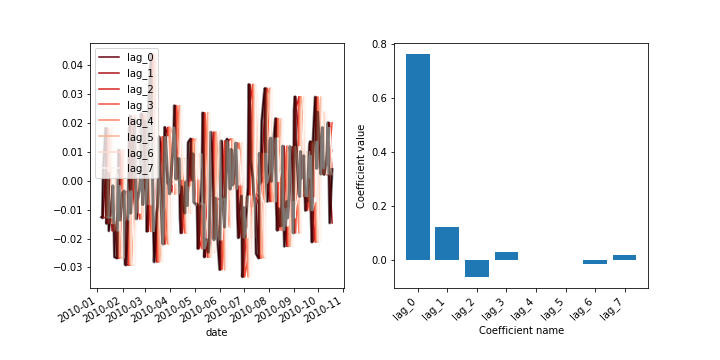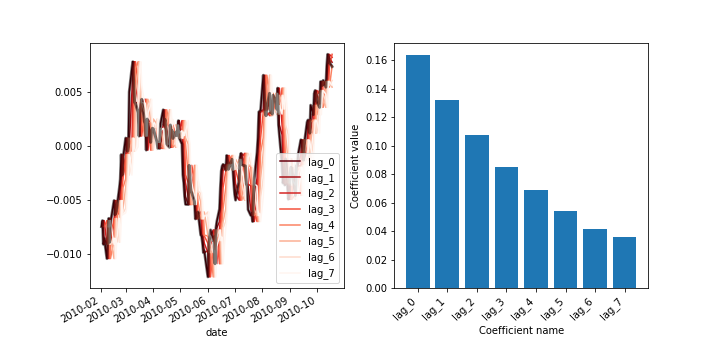Time-delayed features and auto-regressive models
Machine Learning for Time Series Data in Python

Chris Holdgraf
Fellow, Berkeley Institute for Data Science
The past is useful
- Timeseries data almost always have information that is shared between timepoints
- Information in the past can help predict what happens in the future
- Often the features best-suited to predict a timeseries are previous values of the same timeseries.
A note on smoothness and auto-correlation
- A common question to ask of a timeseries: how smooth is the data.
- AKA, how correlated is a timepoint with its neighboring timepoints (called autocorrelation).
- The amount of auto-correlation in data will impact your models.
Creating time-lagged features
- Let's see how we could build a model that uses values in the past as input features.
- We can use this to assess how auto-correlated our signal is (and lots of other stuff too)
Time-shifting data with Pandas
print(df)
df
0 0.0
1 1.0
2 2.0
3 3.0
4 4.0
# Shift a DataFrame/Series by 3 index values towards the past
print(df.shift(3))
df
0 NaN
1 NaN
2 NaN
3 0.0
4 1.0
Creating a time-shifted DataFrame
# data is a pandas Series containing time series data
data = pd.Series(...)
# Shifts
shifts = [0, 1, 2, 3, 4, 5, 6, 7]
# Create a dictionary of time-shifted data
many_shifts = {'lag_{}'.format(ii): data.shift(ii) for ii in shifts}
# Convert them into a dataframe
many_shifts = pd.DataFrame(many_shifts)
Fitting a model with time-shifted features
# Fit the model using these input features
model = Ridge()
model.fit(many_shifts, data)
Interpreting the auto-regressive model coefficients
# Visualize the fit model coefficients
fig, ax = plt.subplots()
ax.bar(many_shifts.columns, model.coef_)
ax.set(xlabel='Coefficient name', ylabel='Coefficient value')
# Set formatting so it looks nice
plt.setp(ax.get_xticklabels(), rotation=45, horizontalalignment='right')
Visualizing coefficients for a rough signal

Visualizing coefficients for a smooth signal

Let's practice!
Machine Learning for Time Series Data in Python

